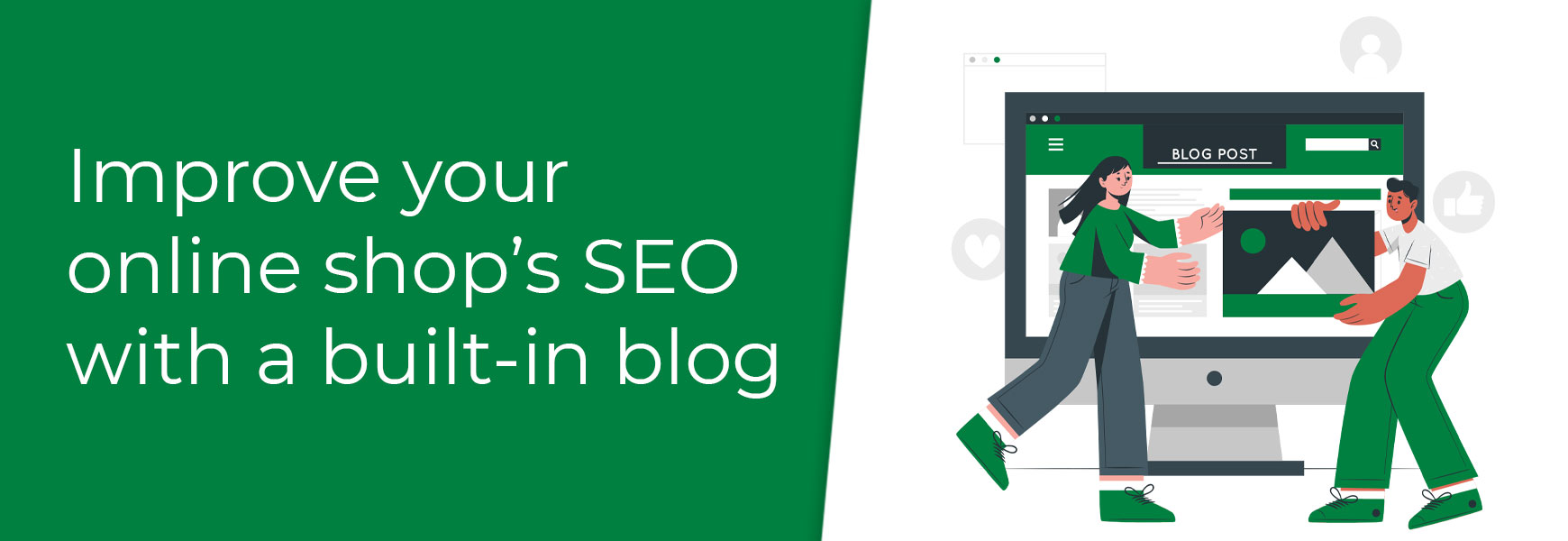There are many ways to drive traffic to your online shop, such as paid ad campaigns, social media, email marketing, and optimising your site for SEO. However, one method that often gets overlooked is blogging – a simple, cost-effective way to steadily and passively attract visitors. What is a blog?A blog is either a stand-alone website or a section of a website that consists of written and visual content focused on a specific topic. New pages, or blog posts, are added to the blog on a regular basis to encourage readers to return frequently. Unlike PR releases, information articles and other publications, blog posts have a more personal tone, which helps to create a connection with the audience.  Why does blogging drive traffic?One thing Google loves more than anything is unique, quality driven content and this alone will give you more of a chance of ranking higher in their search results than anything else. Apart from product descriptions and category summaries, there often isn’t a lot of written content on an online shop, so regularly posting blog posts helps to add this quality content to your domain. As these posts will generally rank higher in Google, they are a great way to get your site in front of potential customers who may not find you via your product or category listings in search results. Once the visitor is on the blog post, you can then entice them to explore further by linking to relevant products and categories within the content. The Bluepark platform has a blog built-in on all packages, so your blog is on the same domain as your online shop. This is best practice for SEO because it ensures that the SEO value your blog creates is kept on your online shop and not distributed on a completely different domain. If your blog was hosted on a separate platform, then it wouldn't be able to use the same domain, so would add no SEO value to your online shop. Doesn’t it take a lot of time and effort?It can, if you post multiple times a month, but this isn’t necessary if you don’t have the time. Even if you post just once a month, you’re still building quality content consistently, which has a much longer life expectancy than other pages, such as products. This all adds to your site’s overall SEO value and lets Google know you’re updating your online store regularly, again, something it will reward you for. But I’m not an expert writer!You don’t need to be. Blog posts aren’t supposed to be works of art or professional journalism pieces. Instead, they should be written in a way that you would speak to a friend or a customer. As long as they’re informative, accurate and easy to read, people will respond to them. On top of that, quality content doesn’t always mean just writing. For a blog post to be of any value it must be a minimum of 300 words. If you look at this blog post, it’s just over 300 words up to the title of this section, so it’s not that much writing. However, to bulk your post out and make it more appealing, add some of the following:
 But I don't know what to write about!As a business owner, there's no one better suited to write about your company, your products, and your industry than you. The knowledge you have is incredibly valuable and is a hugely beneficial way to build your site's SEO value. However, if you're struggling to figure out how to get that knowledge into your blog posts, have a read of our own post, 25 Killer Ideas for Content Rich Blog Posts to get started. Just remember, a blog is not just another way to slap some products on a page and hope people will buy them and it's not a place for hard-selling. It's about gaining potential customer's trust by showing them that you have deep knowledge of your products, your industry and what your customers need from you. It's also about building your brand and getting known by a wider audience. Don't forget your keywordsRemember, you are writing to encourage people to come to your website and actually read your posts, you're not writing specifically for Google. So, although you need to remember to include the keywords you're focusing on within the content, make sure that it reads well for a human, first and foremost. You'll also need to optimise all Meta Tags for each post, with your keywords included, to ensure Google indexes, ranks and displays them correctly. Get your customers involvedUser generated content helps the customer engage with your blog on a more personal level. Think of your blog as another social network and encourage your customers to contribute. And, of course, it's also a great way to create content when you're all out of ideas!
Get your posts readYour current customers and email subscribers have already affirmed their interest in your brand. Therefore, until your blog posts begin to rank in Google, these are the people who are most likely to be interested in what you have to say, so take every opportunity to let them know you have a blog. Add the blog icon to the footer of your website and your email wrapper to ensure customers can easily access it. If you're blogging for the first time, email your subscribers and let them know you now have a blog. Whenever you post on the blog, add an image, short summary and link to it on your latest email newsletter. Promoting on social mediaOne of the best and cost-effective ways of getting the word out there about your blog posts is via social media. Promoting your posts on your accounts allows you to reach millions of potential customers and instantly gives you content to post about. Always remember to include relevant hashtags for each one to ensure you reach a wide an audience as possible.
Reach even furtherThere are various ways to reach an even wider audience, all of which will take time to build up. The suggestions below rely heavily on creating relationships but, do it right, and you'll reap the rewards.
Quality, quality, quality…As with all content SEO, it's all about quality not quantity. Remember, making sure the content is in-depth, engaging and informative first and foremost, even if this means you post less. Optimise it for Google after you've written it, ensuring keywords and Meta Tags are included. Then, once you have the quality content, promote to quality external websites and people will be more likely to link to your blog and we all know Google loves quality links! Try Bluepark for FREE for 14 daysFull access to everything including our support team, no card details required |
|
|



